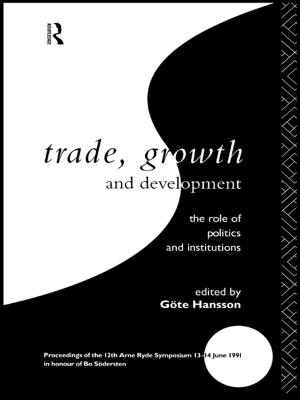Varieties of Capitalism and Business History
The Dutch Case
Business & Finance, Economics, Comparative Economics, Business Reference, Government & Business, Corporate History| Author: | ISBN: | 9781317665311 | |
| Publisher: | Taylor and Francis | Publication: | November 27, 2014 |
| Imprint: | Routledge | Language: | English |
| Author: | |
| ISBN: | 9781317665311 |
| Publisher: | Taylor and Francis |
| Publication: | November 27, 2014 |
| Imprint: | Routledge |
| Language: | English |
The financial crisis of 2008 brought new urgency to the question how best to organise national economies. This volume gives a business history perspective on the Varieties of Capitalism debate and considers the respective merits of the liberal and coordinated market economies. It looks at individual firms and business people as well as institutions and takes a long-term perspective by covering the whole 20th century. The authors examine both continuity and change with a particular focus on the Netherlands, a nation with an open economy, situated between two countries that oppose each other in the way they organize their economies: Germany and Great Britain. The Netherlands also provides an important case study with Dutch business maintaining strong links to the United States, widely considered to be the ‘typical’ liberal market economy.
Contributors address the main topics of the capitalism debate, including labour relations, corporate governance, the firm and its leaders, coordination between firms, innovation, multinationals as agents of change, and economic performance. They show that the Netherlands moved from a mostly liberal market economy before 1914 towards a coordinated market economy from the 1930s onwards, and – up to a certain extent – back again to a more liberal market economy. Under both varieties of capitalism the country experienced economic growth and stagnation, but a more equal division of wealth occurred in the coordinated market economy only. Wars and international economic crises offered moments for revaluation and changes of tack.
This book raises questions for every country around the globe: How is change being brought about? Can one see different results from a liberal or a more coordinated market economy? And most critically: which system is more effective in bringing prosperity and enabling enough people to share in the wealth?
The financial crisis of 2008 brought new urgency to the question how best to organise national economies. This volume gives a business history perspective on the Varieties of Capitalism debate and considers the respective merits of the liberal and coordinated market economies. It looks at individual firms and business people as well as institutions and takes a long-term perspective by covering the whole 20th century. The authors examine both continuity and change with a particular focus on the Netherlands, a nation with an open economy, situated between two countries that oppose each other in the way they organize their economies: Germany and Great Britain. The Netherlands also provides an important case study with Dutch business maintaining strong links to the United States, widely considered to be the ‘typical’ liberal market economy.
Contributors address the main topics of the capitalism debate, including labour relations, corporate governance, the firm and its leaders, coordination between firms, innovation, multinationals as agents of change, and economic performance. They show that the Netherlands moved from a mostly liberal market economy before 1914 towards a coordinated market economy from the 1930s onwards, and – up to a certain extent – back again to a more liberal market economy. Under both varieties of capitalism the country experienced economic growth and stagnation, but a more equal division of wealth occurred in the coordinated market economy only. Wars and international economic crises offered moments for revaluation and changes of tack.
This book raises questions for every country around the globe: How is change being brought about? Can one see different results from a liberal or a more coordinated market economy? And most critically: which system is more effective in bringing prosperity and enabling enough people to share in the wealth?















